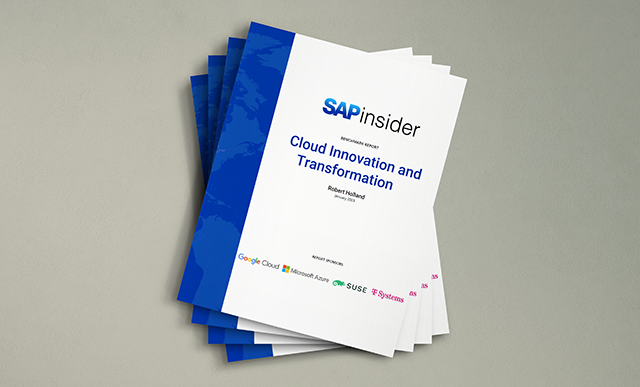A Pragmatic Approach for Moving to the Cloud
3 Key Considerations for Developing an Effective Strategy
Moving data and business functions to the cloud promises simplicity, but organizations continue to struggle with how exactly to do it. A number of factors — timing, budgets, systems maturity, partner readiness, in-house technical capabilities, security concerns, you name it — can make the move more complex. To handle this transition, many organizations undergo hybrid cloud deployments, blending public cloud offerings, private cloud solutions, and legacy on-premise solutions.
These companies are turning to SAP and cloud solutions, including SAP HANA Cloud Platform and SAP HANA Enterprise Cloud, and SAP Ariba, to help them get up and running rapidly with the cloud, while also helping position them for the evolution of their business.
But before they jump into an SAP-based cloud strategy, leaders must answer three big questions to help ensure that their strategy makes sense.
1. How Do I Make the Business Case?
Developing the business case for a cloud transition requires you to define expected return on investment (ROI), which makes public cloud offerings such as SAP Ariba and SAP SuccessFactors solutions compelling, as they can often quickly pay for themselves. On the infrastructure side, it requires you to know how your contracts and costs are structured — from networks to data to software licenses. Look at where you are locked in by contracts or other factors such as regulatory obligations. In identifying expected ROI, don’t forget to factor in the intangibles of cloud, such as flexibility and ease of doing business, which can bring value that isn’t so easily measured.
2. How Do I Select the Right Cloud Solution?
As you work to roll out cloud solutions, you face various options: any of the public, private, or hybrid cloud deployment models paired with any of the three service models — infrastructure-as-a-service (IaaS), platform-as-a-service (PaaS), or software-as-a-service (SaaS). Picking from this matrix of options requires homework. What model works best if you must port functionality from a mainframe environment? Which model will provide greater savings? Will future activities in other areas “break” your chosen model? What kind of heavy lifting — such as code rewriting — will you have to do? Are some models more flexible or more suited to future enterprise growth?
3. How Do I Approach Vendor Selection?
Understand the IT services you’re actually getting from vendors today — from small, à la carte offerings to the broadest activities. Look closely at the activities you conduct internally under your current model and their associated costs, and then use that knowledge to assess new vendor offerings, service level agreements, and future costs, as well as potential ease of future innovation. For example, a SaaS vendor — not you — would assume future burdens of updating and developing software and associated hardware. You also need to consider global issues, such as vendor footprint and data privacy laws covering vendor activities overseas, as well as data protection liability issues, such as how vendors will compensate you in the event of a breach. Last, look at vendor integration capabilities and the ability to support true cloud ecosystems that can grow with your business.
Taking the First Step
Moving forward with a cloud strategy demands deep understanding and big thinking. A conversation with an SAP global services partner such as Deloitte can serve as a great first step toward getting answers. Contact us to get the conversation started by emailing us at SAP@deloitte.com or visit us at www.deloitte.com/SAP.








